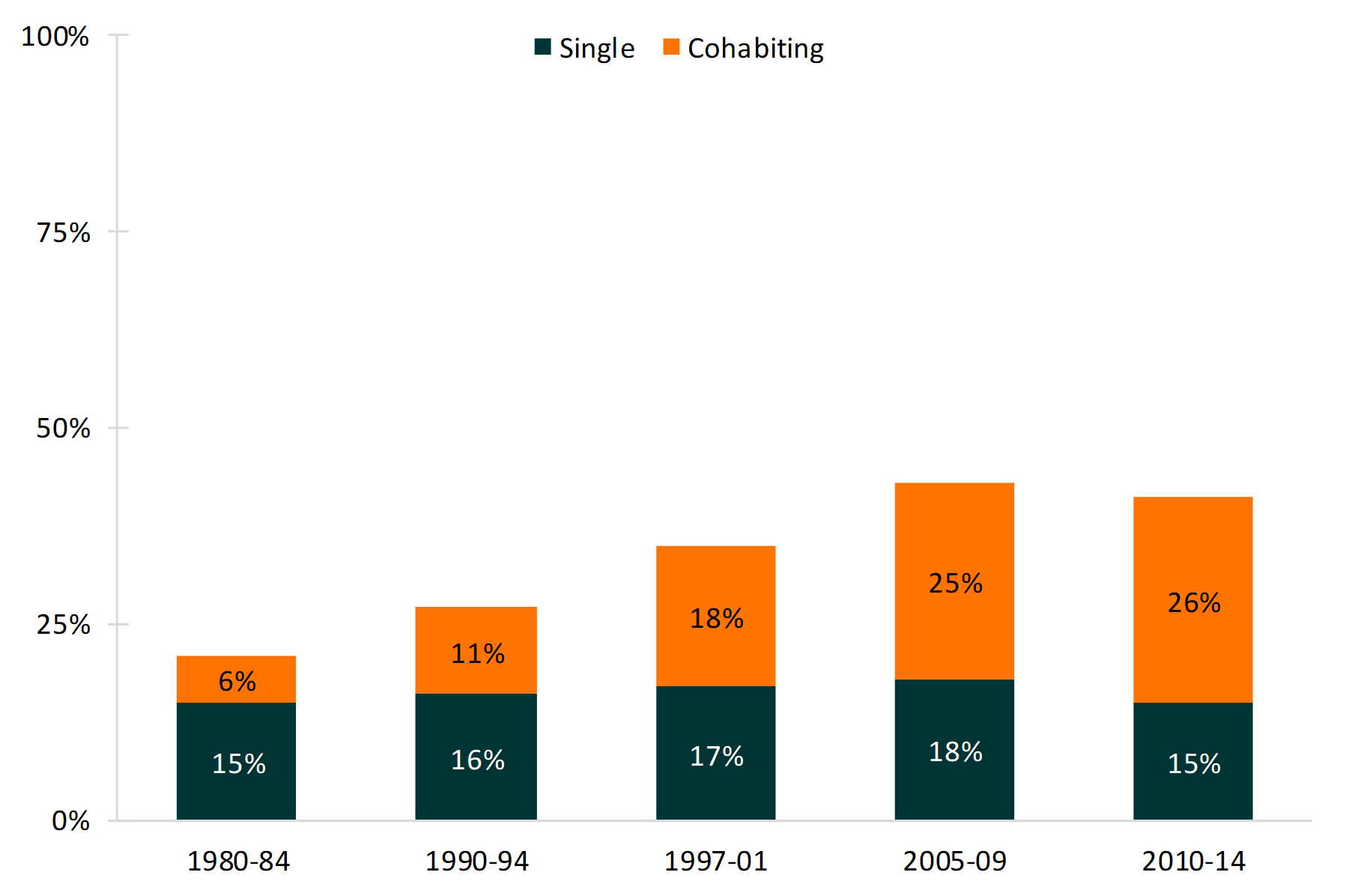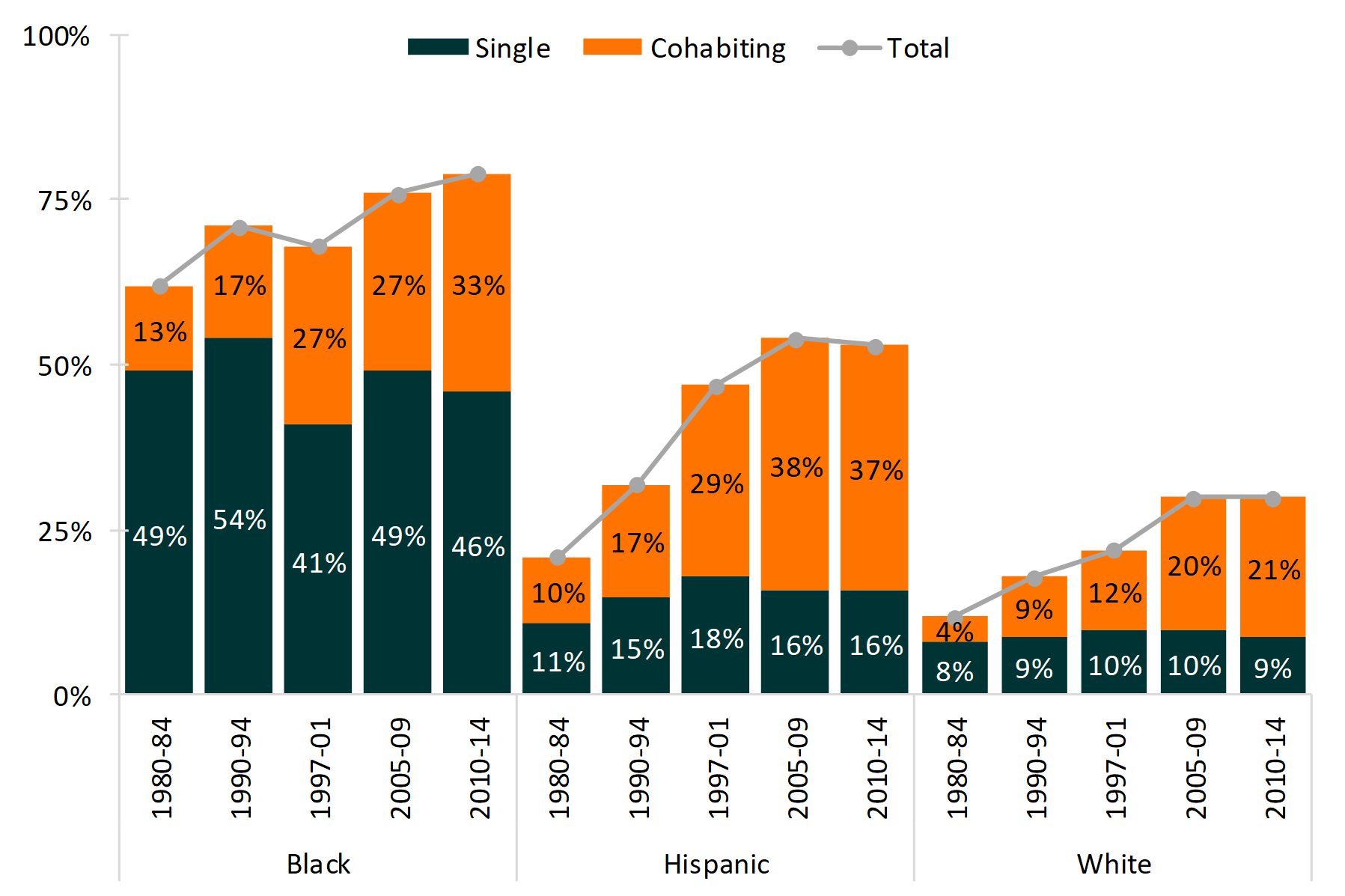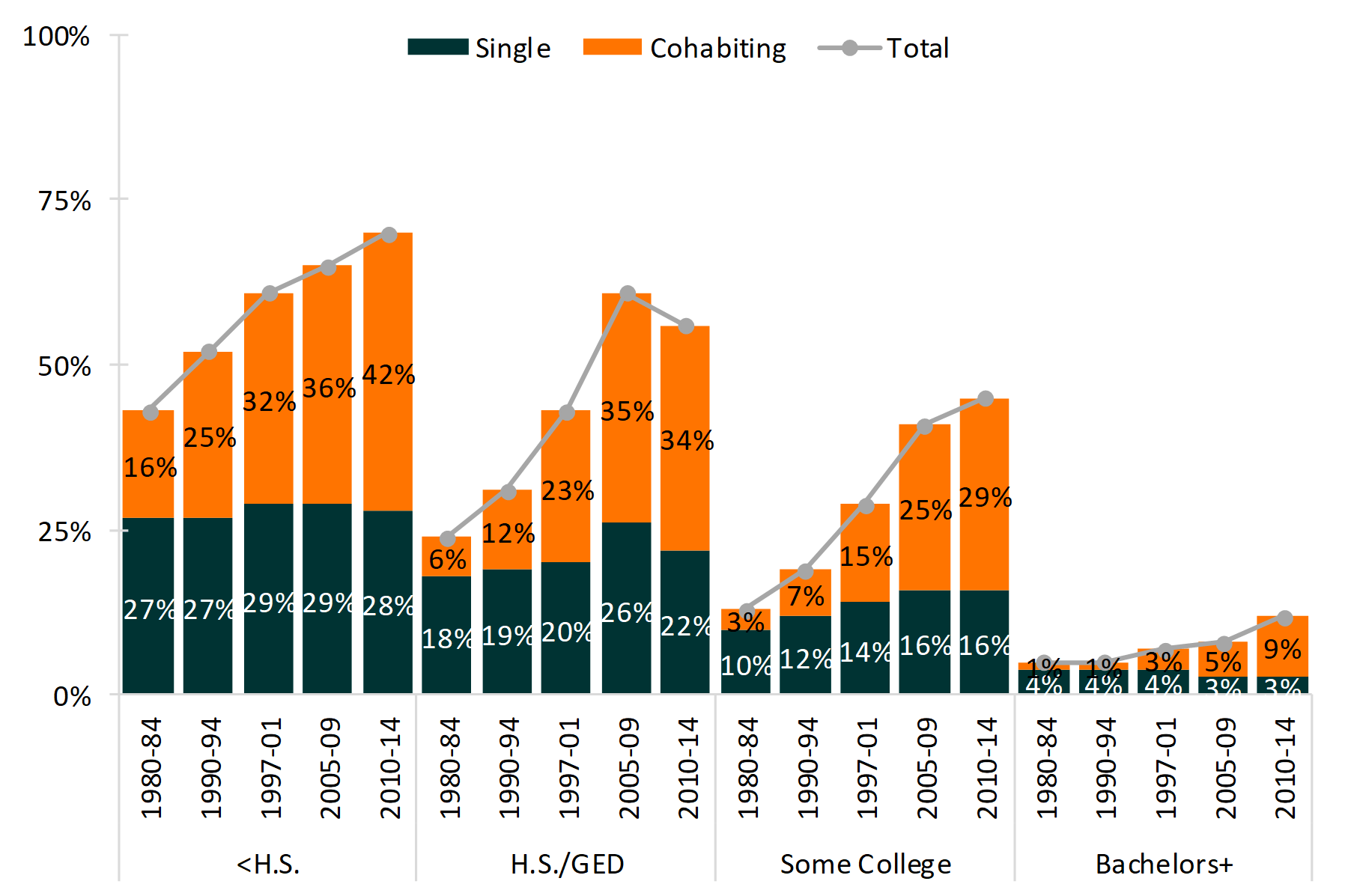Trends in Births to Single and Cohabiting Mothers, 1980-2014
Family Profile No. 04, 2017
Author: Huijing Wu
The sustained rise in non-marital childbearing is largely due to the growth in births to cohabiting mothers rather than an increase in births to single, unpartnered mothers (FP-15-03). Using data from the National Survey of Family Growth (NSFG), this profile updates trends in the shares of births to single and cohabiting mothers since the early 1980s.
Changes in the Shares of Births to Single and Cohabiting Mothers Under Age 40
- Compared to births in the early 1980s, the share of births to unmarried mothers occurring from 2005-2009 had more than doubled from 21 % to 43%.
- More recently, the share of births to unmarried mothers has declined slightly, with 41% of all births from 2010-2014 occurring to single or cohabiting mothers.
- The share of births to single mothers has changed little over the past few decades, ranging from 15-18% between 1980-84 and 2005-2009 and currently at 15% in the past five years.
- The share of births to cohabiting mothers has more than quadrupled from 6% to 26% between 1980 and 2014. The majority of unmarried births have been to cohabiting rather than single mothers since the late 1990s.
- Recently, three out of five children born to unmarried mothers were born into a cohabiting union.
Figure 1. Changes in the Shares of Births to Single and Cohabiting Mothers Under Age 40

Changes in the Shares of Births to Single and Cohabiting Mothers Under Age 40 by Race & Ethnicity
- Among Hispanic mothers, the total share of non-marital births slightly declined between the periods of 2005-2009 and 2010-2014. Among White mothers, the share of nonmarital births remained stable. Among Black mothers, the share slightly increased, standing at 79% in 2010-2014.
- Since the 1990s, at least half of non-marital births among White and Hispanic mothers occurred in cohabiting unions. Recently, seven out of ten children born to unmarried White and Hispanic women were born into a cohabiting union.
- In contrast, although the share of births to Black women in cohabiting unions has increased over time, only four out of ten children born to unmarried Black women were born in a cohabiting union.
Figure 2. Changes in the Shares of Births to Single and Cohabiting Mothers Under Age 40 by Race & Ethnicity

Changes in the Shares of Births to Single and Cohabiting Mothers Under Age 40 by Educational Attainment
- The total share of non-marital births continuously rose over the past few decades among women at all levels of educational attainment, except among mothers with a high school diploma/GED.
- The shares of births to both cohabiting and single mothers with a high school diploma/GED decreased between the two most recent time periods, but the decline was especially pronounced for single mothers.
- Among women without a high school diploma, some college education, or a college degree, the increase in non-marital childbearing is due to an increase in the share of births to cohabiting mothers. The source of growth in non-marital childbearing for most women is cohabitation.
- There are substantial differences across education levels in the share of all births occurring outside of marriage.
- The share of births to unmarried mothers with less than a high school education climbed to 70% in 2010-2014, whereas unmarried births accounted for only 12% of all births to mothers with at least a bachelor's degree in 2010-2014.
Figure 3. Changes in the Shares of Births to Single and Cohabiting Mothers Under Age 40 by Educational Attainment

References
- Bumpass, L., & Lu, H. H. (2000). Trends in cohabitation and implications for children's family contexts in the United States. Population Studies, 54(1), 29-41. http:/ldx.doi.orgl10.1080/713779060
- Kennedy, S., & Bumpass, L. (2008). Cohabitation and children's living arrangements: New estimates from the United States. Demographic Research, 19(47), 1663-1692. http:/ldx.doi.org/10.40541DemRes.2008.19.4 7
- Manning, W. D., Brown, S. L., & Stykes, B. (2015). Trends in births to single and cohabiting mothers, 1980-2013. Family Profiles, FP-15-03. Bowling Green, OH: National Center for Family & Marriage Research. https:l/www.bgsu.edu/contenUdam/BGSU/college-of-arts-and-sciences/NCFMR/documents/FP/FP-15-03-birth-trends-single-cohabiting-moms.pdf
Suggested Citation
- Wu, H. (2017). Trends in births to single and cohabiting mothers, 1980-2014. Family Profiles, FP-17-04. Bowling Green, OH: National Center for Family & Marriage Research. http://www.bgsu.edu/ncfmr/resources/data/family-profiles/wu-trends-births-single-cohabiting-mothers-fp-17-04.html
Updated: 11/12/2025 10:26AM


